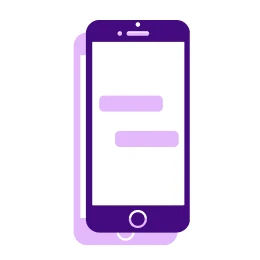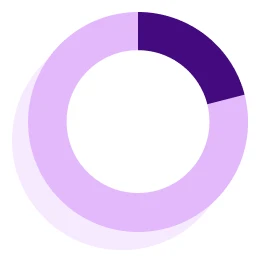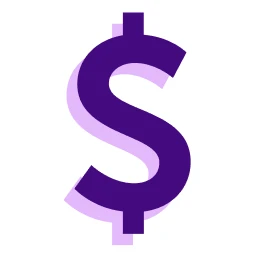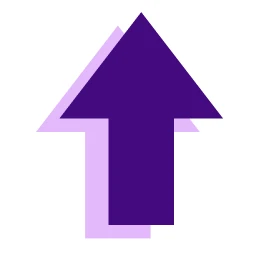My Account Details
McGraw Hill Affordable Access Programs
Together, we can improve
student success.
Increase student access and affordability of course materials with Affordable Access.

What are Affordable Access programs?
Affordable Access programs are course material distribution models designed by institutions and their bookstores and guided by the U.S. Department of Education. They aim to deliver required learning resources to students, at a significantly reduced cost, on or before the first day of class.
Students can use financial aid to pay for their course materials because their institution applies the charge to their student account, along with tuition and fees. Affordable Access programs offer faculty maximum choice to select the learning resources best suited for their course, at the lowest competitive market rate. They also allow students to “opt out” if they wish to obtain their course materials another way.
Affordable Access Programs
Inclusive Access is an affordable access program sometimes referred to as “First Day,” “Follett Access,” or “Immediate Access.” In an Inclusive Access model, faculty decide if they want their course/section to participate. If they do, students are granted access to a digital version of their required course materials via the institution’s learning management system, on or before the first day of class. Students pay a discounted rate for the materials, on their student account alongside tuition and fees. Students are provided a process to “opt out” for each participating course if they do not wish to purchase the materials in this manner.
Equitable Access is an affordable access program sometimes referred to as “First Day Complete” or “Access Complete.” In an Equitable Access program, all courses in a particular academic program, college, or institution participate. Students are granted access to a digital version of their required course materials for that term, on or before the first day of class via the institution’s learning management system. A discounted flat fee per credit hour or term is charged to a student’s account alongside tuition and fees. This fee includes materials for all courses in which the student is enrolled for that term. In an Equitable Access program, students can choose to opt out; however, by doing so they agree to obtain all their course materials individually from an alternative source that term.
Cascading Access is a combination of Equitable and Inclusive Access programs. The difference is how the student elects to participate. Cascading Access is initially delivered in the same way as an Equitable Access program, where students are provided access to all their required materials for the term, on or before the first day of class, and charged a discounted flat fee per credit hour or term. However, in a Cascading Access model, if a student opts out of the program, they can still choose to purchase their materials by course individually for a discounted rate via the institution/bookstore rather than an alternative source—similar to how they would in an Inclusive Access model

See why institutions across the country are choosing Affordable Access.
Why are students choosing Affordable Access?
On average, Affordable Access programs have a 95% student participation rate because:
- It is the most convenient way for students to purchase their required course materials and gain single sign-on access via the institution’s learning management system.
- It offers the lowest competitive market rate on digital course materials.
- It ensures that all students have consistent access throughout their course to their required course materials—beginning on the first day of the term.

Why are institutions choosing Affordable Access programs?

Millions saved
Affordable Access programs have saved students on average more than $150 million per year on McGraw Hill products.

Students choose what’s best for them
Students are free to choose whatever purchase option they feel works best for them.

Improved Student Outcomes
Research shows that students having access to their required course materials on Day 1 of class can significantly impact their success and course completion rates. A recent *study found even greater effects on minority populations including a 21.06% increase in course completion rates for students who identify as Black.
*Moore, M. & Piazza, B. (2023). Inclusive Access course materials: An analysis of a technical college's Inclusive Access program. Journal of the Scholarship of Teaching and Learning, 23(3)
Do Affordable Access programs work?
Click on the case studies below to learn more about how an Affordable Access program is working at three higher education institutions.
Indiana University built an Inclusive Access program from the ground up:
Professor Brad Wheeler has helped usher in a new way for Indiana University students to learn, saving them more than $50 million thanks to eTexts embedded in the program.
Copiah-Lincoln Community College (Mississippi) Key Findings:
- In 2012, the college launched Inclusive Access in 14 courses.
- Today, the program has expanded to 144 courses across nearly every division
- Retention rates have improved 21%
- Graduation rates have improved by 14%
- Students save on average $1400 each per year on the price of textbooks, a combined $4 million annually
Florida State College Key Findings:
- A pilot that launched in 2021 has expanded to more than 300 sections
- Course material prices average $18.89 per credit hour—below the Florida College System’s definition of “affordable.”
- Students saved more than $350,000 on course materials in the first year.
- Faculty saw improvements in students’ readiness to learn.
Community College in Northeastern U.S. Key Findings:
- Students in Inclusive Access (IA) classes attained a C or better at higher rates than non-IA students, regardless of racial or gender identity, age group, or course
- Course materials prices were 25-59% less with IA, with students saving an average of $46.70 per course, or $209,000 in total
- Students of all races were more successful in Inclusive Access classes, including a statistically significant 13 percentage point increase among students identifying as Black.
Frequently Asked Questions (FAQs) , Link will open in a new window
To find answers to your questions about Affordable Access programs,
Myth vs. Fact , Link will open in a new window
To separate fact from fiction about Affordable Access programs,




